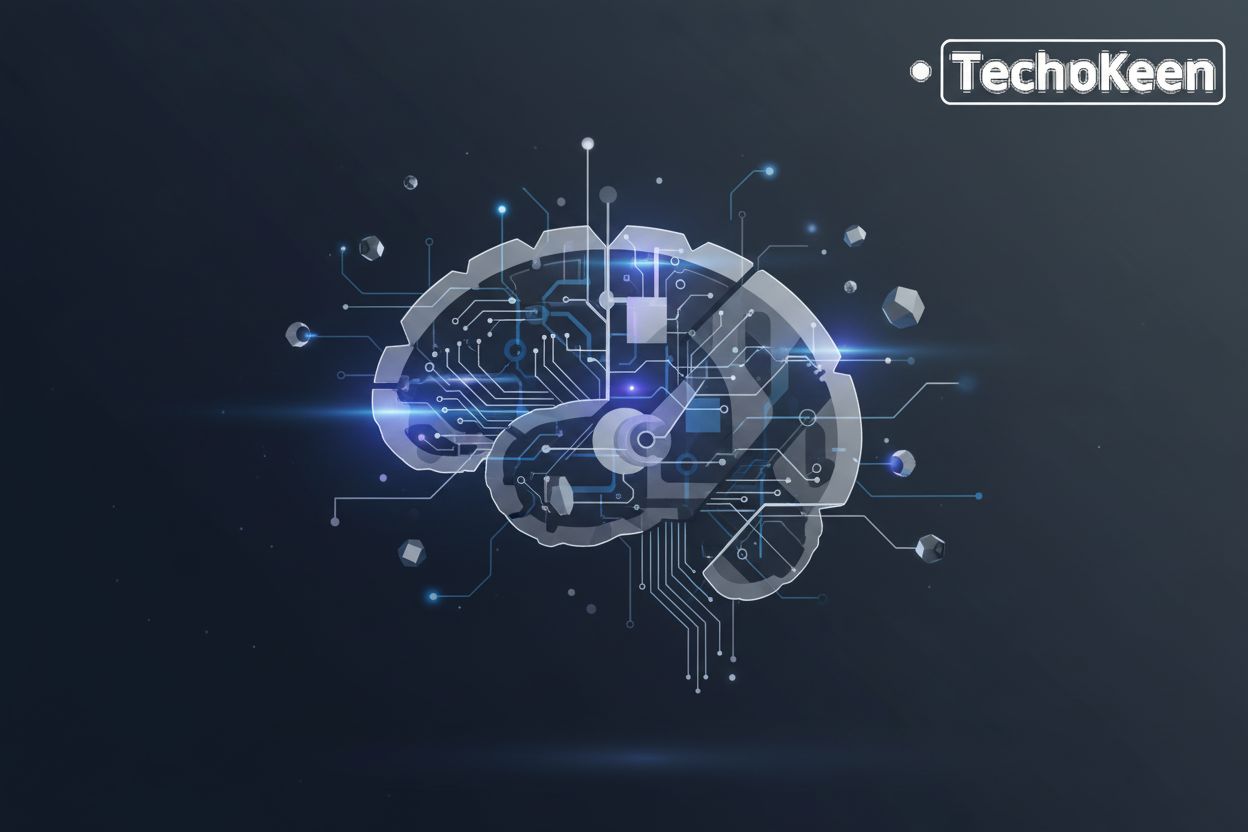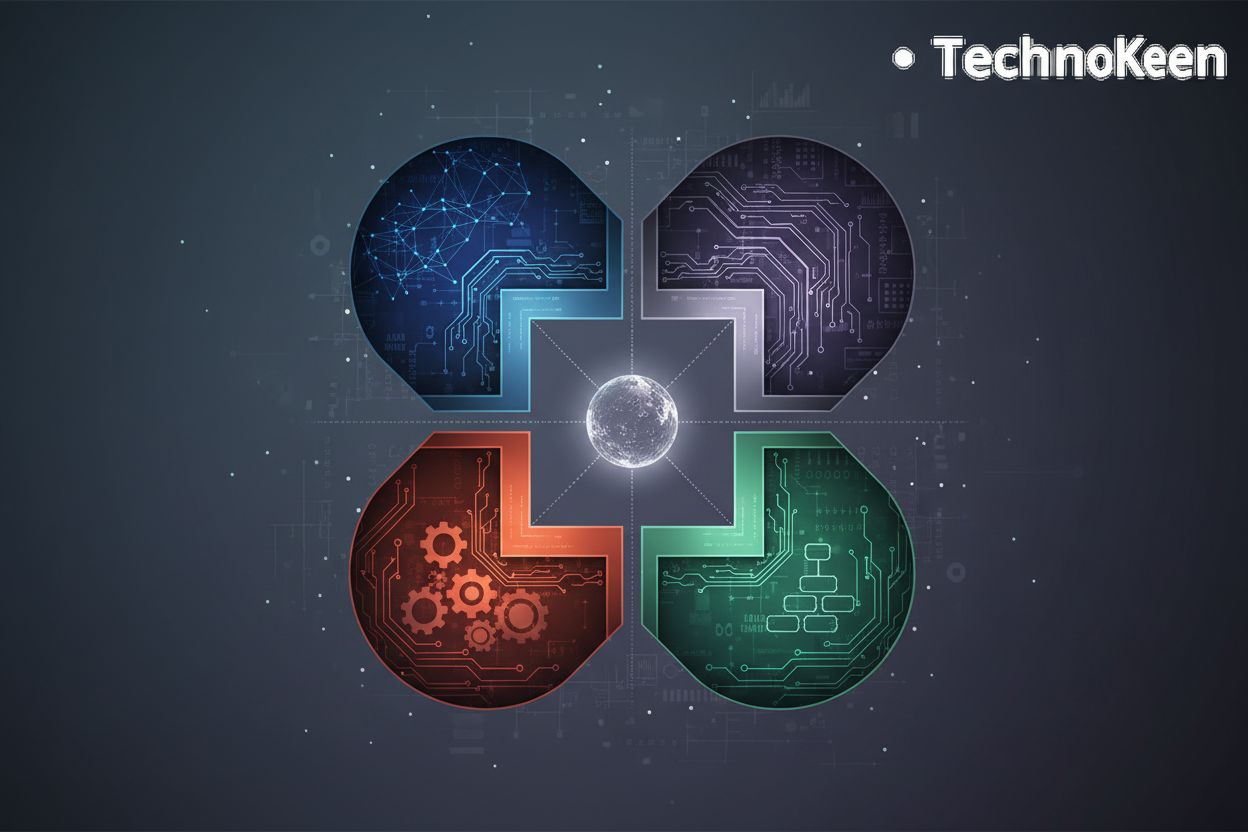Homomorphic Encryption: Securing AI Agents and Enterprise Data
TL;DR
Understanding Homomorphic Encryption
Imagine being able to process sensitive data without ever exposing it. That's the promise of homomorphic encryption (HE), a groundbreaking technique that allows computations to be performed on encrypted data without decrypting it first. This ensures data privacy throughout the entire process.
Homomorphic encryption is a type of encryption that allows computations to be performed on encrypted data without requiring decryption. The term "homomorphic" means "similar structure," indicating that the data structure is preserved during encryption. Homomorphicencryption.org provides a comprehensive introduction to this technology.
Key benefits include:
- Data Privacy: Data remains encrypted during processing, preventing unauthorized access.
- Secure Delegation: Enables secure outsourcing of computations to third parties without revealing sensitive information.
- Enhanced Security: Beyond just privacy and secure delegation, HE bolsters security by making data useless to attackers even if it's stolen. Imagine a breach where all the stolen data is encrypted and unusable without the proper keys, significantly reducing the impact of the incident.
The process of homomorphic encryption involves several key steps:
- Setup: Choosing an appropriate encryption scheme and defining security parameters.
- Key Generation: Creating public, re-linearization, and Galois keys. The public key is used for encryption. Re-linearization keys are crucial for reducing the "noise" that accumulates during homomorphic operations, allowing for more complex computations. Galois keys are used for specific operations like rotations and permutations on the encrypted data, which are essential for many advanced computations.
- Encryption: Converting data into ciphertext using the public key.
- Evaluation: Performing computations on the encrypted data.
- Decryption: Using the secret key to retrieve the desired result.
There are several types of homomorphic encryption, each with different capabilities:
- Partially Homomorphic Encryption (PHE): Supports only one type of operation (addition or multiplication).
- Somewhat Homomorphic Encryption (SHE): Supports a limited number of both addition and multiplication operations. The limitation here is that the number of operations is fixed and relatively small, meaning complex computations can quickly become impossible as the "noise" in the ciphertext grows too large.
- Leveled Homomorphic Encryption (LHE): This is a practical variant of SHE. It supports a predefined number of operations, but crucially, it's optimized for a specific "level" of computation. Unlike SHE where the limit is more about the total number of operations, LHE is designed to handle a certain depth of circuit (a sequence of operations). This makes it more efficient for specific tasks where the computational depth is known beforehand, but it still can't handle arbitrary computations like FHE.
- Fully Homomorphic Encryption (FHE): Supports arbitrary computations on encrypted data. This is the ultimate goal, allowing for any computation to be performed on encrypted data.
As Copperpod IP notes, HE is particularly useful in supply chain security, regulatory compliance, and private data analytics. Zama's fhEVM protocol uses FHE to enable confidential smart contracts, ensuring transaction inputs and states remain encrypted even during computation.
Understanding these fundamentals sets the stage for exploring the practical applications of homomorphic encryption in securing AI agents and enterprise data.
Homomorphic Encryption and AI Agents
AI agents are revolutionizing industries, but processing sensitive data raises significant privacy concerns. Homomorphic encryption (HE) offers a way to address these concerns by allowing AI agents to work with encrypted data, ensuring that sensitive information remains protected throughout the entire process.
HE protects sensitive data used by AI agents from unauthorized access. It ensures data privacy during AI model training and inference. HE enables secure AI deployment even in untrusted environments.
For example, in healthcare, AI agents can analyze encrypted patient records to predict disease outbreaks without ever exposing the raw data. Similarly, in finance, AI can detect fraudulent transactions on encrypted financial data, preventing potential breaches.
HE allows AI agents to process encrypted data without decryption. It supports secure collaboration between data owners and AI developers. HE facilitates privacy-compliant AI solutions.
HE offers several compelling use cases in AI agent development. This includes secure AI-powered customer service automation. It also includes private data analytics for marketing and sales ai, and confidential ai decision automation in finance and HR.
Consider AI-powered customer service automation; AI agents can analyze customer inquiries and provide personalized support while keeping sensitive customer data encrypted. In HR, ai can automate confidential decision-making processes, such as performance evaluations, without exposing sensitive employee data.
As we move forward, understanding how to implement HE in practice becomes increasingly important.
Applications in Enterprise AI Solutions
Homomorphic encryption (HE) is revolutionizing how enterprises handle data, but how does it fit into existing systems? By integrating HE into enterprise AI solutions, organizations can unlock new levels of data security and compliance.
HE ensures that sensitive data remains protected, even during processing. It meets stringent data protection regulations like GDPR, CCPA, and HIPAA. This reduces the risk of data breaches and unauthorized access, which is crucial in highly regulated industries.
- Data Protection: HE allows organizations to process and analyze sensitive data without ever exposing it in its raw form.
- Regulatory Compliance: By keeping data encrypted, HE helps meet the requirements of various data protection laws.
- Secure Collaboration: HE enables secure data sharing and collaboration between different departments or organizations. This allows teams to work together on sensitive datasets without compromising confidentiality, fostering innovation and efficiency.
Many enterprises are moving to the cloud, but security remains a top concern. HE allows enterprises to leverage cloud resources without compromising data privacy. It supports secure processing of sensitive data in the cloud, facilitating hybrid and multi-cloud deployments.
- Cloud Adoption: HE makes it safer to use cloud services for data processing.
- Data Processing: Sensitive data can be processed in the cloud without decryption.
- Deployment Flexibility: Supports hybrid and multi-cloud environments while maintaining security.
Supply chains involve numerous partners, each with varying levels of security. HE enables secure data exchange between these partners. This protects sensitive supply chain data from cyber threats and supports compliance with industry-specific regulations.
- Secure Data Exchange: HE ensures that data shared between supply chain partners remains encrypted.
- Cyber Threat Protection: Reduces the risk of data breaches in the supply chain.
- Regulatory Alignment: Supports compliance with regulations relevant to supply chain operations.
As we move forward, understanding the role of HE in ai model deployment and management becomes increasingly important.
Implementing Homomorphic Encryption
Implementing homomorphic encryption (HE) might seem like a futuristic endeavor, but it's becoming increasingly accessible. Several open-source libraries and tools make it feasible to integrate HE into your AI agent and enterprise data security strategies.
Several libraries offer robust support for various homomorphic encryption schemes. These tools empower developers to implement HE without needing to be cryptography experts.
- Microsoft SEAL: Widely used and well-documented, Microsoft SEAL supports the BFV and CKKS schemes, making it a versatile choice for many applications.
- PALISADE: PALISADE supports multiple HE schemes, including BGV, BFV, CKKS, TFHE, and FHEW, with multiparty support, making it ideal for complex, collaborative projects.
- HElib: An early library from IBM, HElib supports the CKKS and BGV schemes and bootstrapping, providing a solid foundation for experimentation and development.
- Lattigo: Lattigo is a lattice-based cryptographic library written in Go, offering a different language ecosystem for HE implementation.
- Concrete: For those looking to use a custom variant of the TFHE scheme, Concrete provides specialized tools and capabilities.
Selecting the appropriate library depends on the specific requirements of your project. Consider factors like the type of HE scheme needed, the programming language, and the level of community support. Each library has its strengths and trade-offs, so evaluating your needs is essential.
While HE offers incredible potential, implementation isn't without its challenges. Understanding these hurdles is crucial for successful integration.
- Computational Overhead: HE operations can be computationally intensive, leading to performance limitations. Optimizing your code and choosing the right HE scheme can help mitigate these issues.
- Complexity of Implementation: Integrating HE into existing systems can be complex, requiring careful planning and expertise. To manage this complexity, consider a phased rollout approach, starting with pilot projects on non-critical data. Thorough testing and validation are essential to ensure security and functionality.
- Key Management: Securely managing encryption keys is paramount. Implementing robust key generation, storage, and rotation policies is critical to prevent unauthorized access.
Homomorphic Encryption in AI Agent Security Frameworks
Homomorphic encryption (HE) is not just about encrypting data; it's about building a secure foundation for AI agents to operate confidently. By integrating HE into AI agent security frameworks, we can ensure data privacy and compliance while unlocking new possibilities for secure AI deployments.
Integrating HE with AI agent identity management is crucial. It ensures that only authorized agents can access and process encrypted data. This involves:
- Implementing AI identity management to control which agents can access specific encrypted datasets. For instance, in a retail setting, an AI agent for inventory management might have access to encrypted sales data, while an agent for marketing analytics accesses anonymized customer data.
- Defining access control policies that dictate how AI agents interact with encrypted data. This might involve setting granular permissions, such as allowing an agent to perform computations but not decrypt the underlying data.
- Employing secure key management to protect the cryptographic keys used for HE. This includes generating, storing, and rotating keys securely, often using hardware security modules (HSMs) or secure enclaves.
HE plays a vital role in bolstering AI agent security frameworks. The key elements include:
- Leveraging HE in Zero Trust architectures ensures that AI agents are continuously authenticated and authorized, regardless of their location within the network. This approach minimizes the risk of unauthorized access to sensitive data, even if an agent is compromised.
- Establishing AI agent compliance and audit trails to track all interactions with encrypted data. For example, an audit trail might record which agent accessed which encrypted dataset, what computations were performed, and when. This helps organizations demonstrate adherence to regulatory requirements and detect potential security breaches.
- Conducting risk management for AI deployments that use HE. This involves identifying potential vulnerabilities, assessing the impact of security breaches, and implementing mitigation strategies to protect sensitive data. For instance, a risk assessment might evaluate the potential for side-channel attacks or the computational cost of decrypting large amounts of encrypted data.
HE enhances AI model governance by ensuring the security and integrity of AI models. This includes:
- Implementing model versioning and security to track changes to AI models and protect them from unauthorized modifications. This ensures that only trusted models are used to process sensitive data.
- Monitoring AI model performance with encrypted data to detect anomalies and ensure that models are functioning correctly. This involves tracking metrics like accuracy, latency, and resource utilization to identify potential issues.
- Enabling Explainable AI (XAI) with HE to provide insights into how AI models make decisions, even when working with encrypted data. This is challenging because direct inspection of model weights or intermediate computations is impossible. Approaches might involve using HE to perform specific, limited queries on the encrypted data that reveal certain decision-making patterns, or developing HE-compatible model architectures that are inherently more interpretable. This helps build trust in AI systems and ensures that they are used ethically and responsibly.
As we transition to the next section, we'll explore a practical code example to illustrate how HE can be implemented.
The Future of Homomorphic Encryption
Is homomorphic encryption the crystal ball for data privacy? As technology evolves, so does the potential for securing sensitive information.
The future of homomorphic encryption (HE) is bright, with several key advancements on the horizon. These improvements aim to make HE more practical and accessible for real-world applications.
- Improved performance and reduced computational overhead. Researchers are continually working to optimize HE algorithms and implementations. This includes techniques like algorithmic improvements and hardware acceleration to reduce the computational burden, making HE faster and more efficient. The driving force behind new schemes is often the need for better performance on specific operations or to reduce the memory footprint, making HE viable for a wider range of devices and applications.
- New HE schemes and libraries. The development of new HE schemes tailored to specific use cases is ongoing. These schemes aim to provide better performance or security properties compared to existing options. Libraries such as Microsoft SEAL and PALISADE, mentioned earlier, continue to evolve.
- Standardization efforts and industry adoption. Efforts to standardize HE protocols and APIs are underway to promote interoperability and ease adoption. Increased industry collaboration and awareness are driving the integration of HE into various applications and platforms. Organizations like the HomomorphicEncryption.org consortium and various working groups within bodies like NIST are actively involved in these efforts.
Homomorphic encryption promises to revolutionize AI and data privacy, fostering greater trust and innovation. Its impact spans various sectors, creating new opportunities for secure data monetization.
- Wider adoption of privacy-preserving AI techniques. As HE becomes more efficient and accessible, it will enable the wider adoption of privacy-preserving AI techniques. AI models can train and make predictions on encrypted data without ever exposing the raw information.
- Increased trust in AI systems and data sharing. HE can increase trust in AI systems by ensuring that sensitive data remains protected. This can encourage more data sharing and collaboration, as stakeholders can be confident that their information is secure.
- New opportunities for secure data monetization. HE can unlock new opportunities for secure data monetization by enabling data owners to share their data for analysis without compromising privacy. This can lead to the development of new services and business models that leverage the value of data while maintaining its confidentiality.
Ready to explore the possibilities of secure AI? Technokeens offers tailored solutions to help you navigate the complexities of homomorphic encryption.
- Technokeens offers custom software development, UX/UI design, and cloud solutions for AI. Technokeens provides a comprehensive suite of services to help organizations develop and deploy secure AI applications. They offer expertise in custom software development, user experience design, and cloud integration.
- Blending domain-driven expertise with technical execution. Technokeens combines deep domain knowledge with technical expertise to deliver innovative AI solutions. By understanding the specific needs of each industry, they can tailor their services to maximize impact and value.
- Delivering scalable and secure AI solutions backed by strong UX/UI and agile development. Technokeens focuses on building scalable and secure AI solutions that are user-friendly and adaptable to changing business needs. Their agile development approach ensures that projects are delivered on time and within budget.
As we conclude this exploration, remember that homomorphic encryption is more than just a technology; it's a pathway to a more secure and trustworthy digital future. Contact Technokeens to learn more.
Conclusion
As we navigate the complexities of AI and data privacy, homomorphic encryption emerges as a beacon of hope. It promises to revolutionize how AI agents and enterprises handle sensitive data.
Homomorphic encryption is a powerful tool for securing AI agents and enterprise data. It allows computations on encrypted data without decryption. This ensures data privacy and compliance.
HE enables secure AI deployments in various sectors. AI can analyze encrypted patient records in healthcare, allowing for valuable insights without compromising patient confidentiality. It can also detect fraudulent transactions on encrypted financial data, safeguarding sensitive financial information.
Open-source libraries and frameworks make HE more accessible. Developers can use well-documented options like Microsoft SEAL for general-purpose applications, and then explore more specialized libraries like Concrete for specific use cases, enabling practical implementation without deep cryptography expertise.
To get started, explore HE libraries and tools for your AI projects. Begin with well-documented options like Microsoft SEAL. Then, experiment with specialized libraries like Concrete.
Assess your organization's data security and privacy requirements. Identify sensitive data flows in AI processes. Ensure alignment with regulations like GDPR and HIPAA.
Consider integrating HE into your AI agent security framework. Implement AI identity management and access control policies. Establish AI agent compliance and audit trails to maintain accountability.
Homomorphic encryption is more than just a technology; it's a pathway to a more secure digital future.





